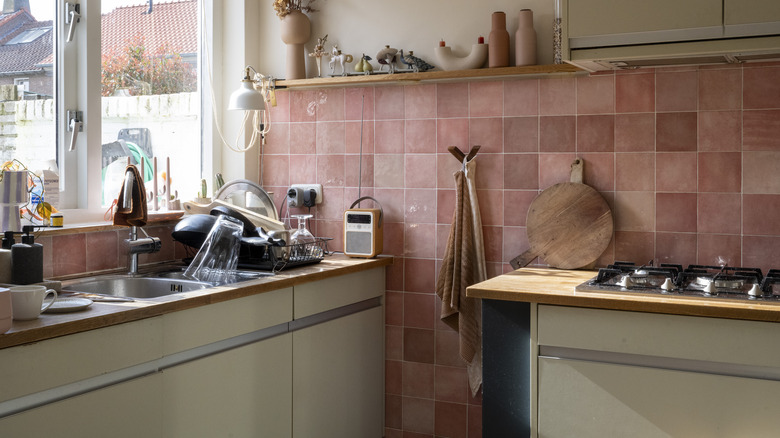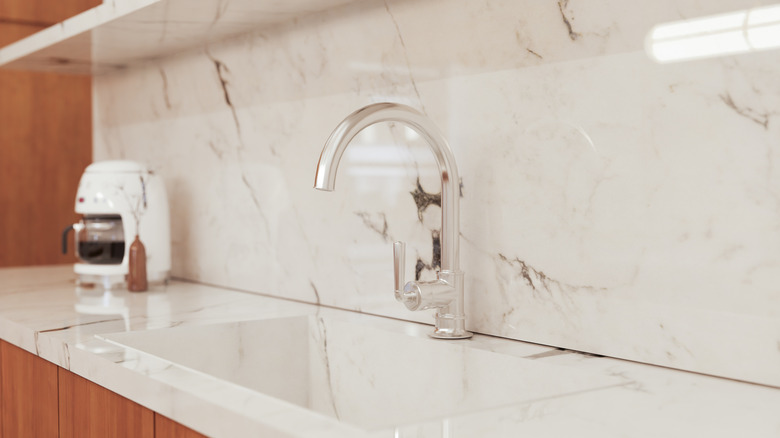Here's Exactly Where Your Kitchen Backsplash Should End
Originally designed to protect the walls behind sinks or stoves from water, grease, and food spills, backsplashes have evolved into a distinct design element, adding visual interest and framing the kitchen space. Once you've chosen your backsplash material, the next question is how far you want it to extend. While the first backsplashes were only a few inches high, we're now seeing some that continue all the way to the ceiling. To gain some insight, Food Republic spoke with Melissa Osinga of Revision Design/Remodeling in Charlotte, North Carolina, who says, "The beauty of kitchen design is that outside of local code requirements for safety, there aren't a lot of strict rules for how the space should look." This flexibility extends to backsplash height, allowing people to choose the look that best suits their space.
That said, when determining where to end a backsplash, several factors should be considered, including whether there are cabinets overhead and the overall vibe you're going for. Ideally, the backsplash should create visual flow. "We often see backsplashes go from the countertop all the way up to the bottom of wall cabinetry," says Osinga. Ending the backsplash here creates visual cohesion and makes the room appear larger. Conversely, ending a backsplash midway between the counter and the bottom of the cabinets creates a messy, unfinished look that disrupts the space's flow.
More factors for backsplash height and design
You don't have to stop the backsplash at the base of the upper cabinets. "Extending the backsplash up to the ceiling where it is not technically 'needed' around windows and around range hoods can draw the eye upwards and make the room appear larger," says Melissa Osinga — a great trick, especially if you're working with a small space. It can also create a sense of drama, for example, if you're using something bold like statement-making vintage-inspired tiles for your backsplash.
If you plan to install floating shelves, Osinga advises considering what you want to make the focal point. "Do you want to highlight what you're stacking on the shelves, or do you really love the backsplash material and want to cover more of the kitchen with it?" You may opt to continue the backsplash and secure the shelving on top of it for a more visually impactful effect, rather than ending it at the base.
Lastly, Osinga emphasizes the importance of choosing the right materials. She encourages people to avoid those that are heavily textured, like travertine or micro-sized mosaics, which "can make the space feel cluttered" when used in large areas. Instead, look for smoother options, such as a classic subway tile or Macaubas quartzite — Joanna Gaines' favorite luxe alternative to tile. Keeping these factors in mind will ensure your backsplash looks modern and appropriate for the space.


